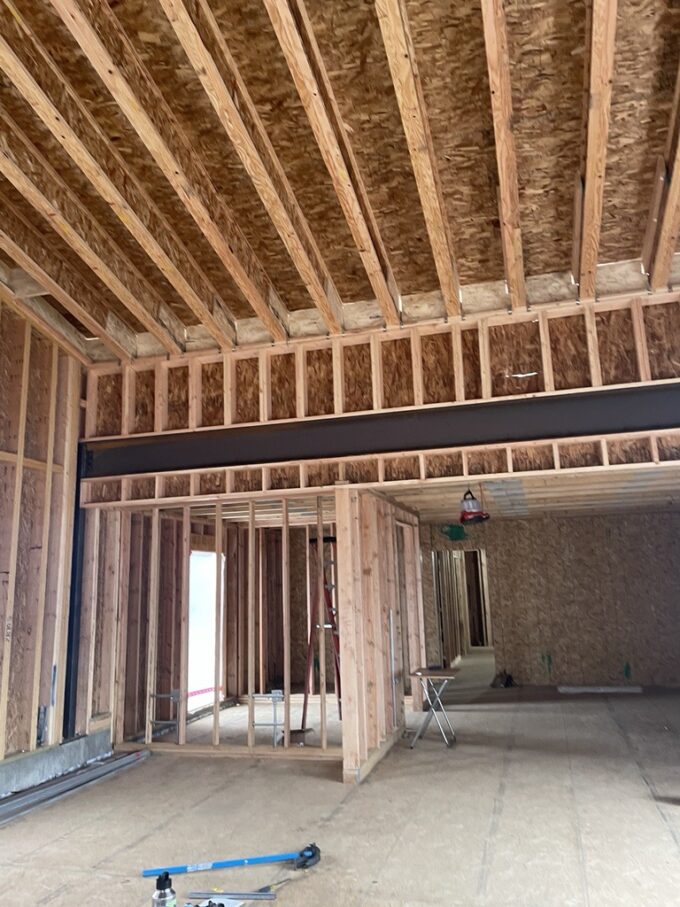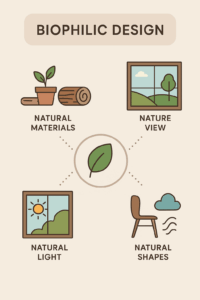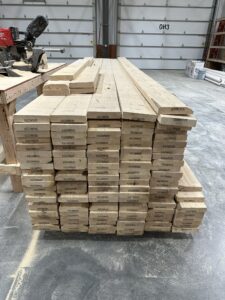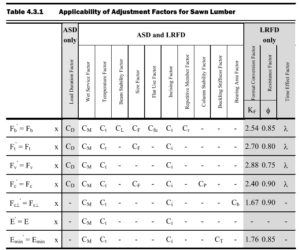Wood vs Steel Framing
From an architectural and engineering perspective, selecting the appropriate framing material for residential buildings involves evaluating both wood stud framing and cold formed steel stud framing. Each material offers distinct advantages and disadvantages that influence their suitability for different projects. When considering wood vs steel framing, it’s essential to examine the benefits and drawbacks of each material.
Wood Stud Framing
Advantages:
- Cost-Effective: Wood is generally cheaper than steel in terms of material and labor. It is widely available and requires less specialized equipment.
- Ease of Construction: Wood is easier to cut, shape, and join, making it a more convenient option for custom designs and on-site adjustments. It is also lighter, reducing handling difficulty.
- Thermal Insulation: Wood provides better natural insulation properties than steel, helping maintain energy efficiency.
- Sustainability: When sourced from responsibly managed forests, wood is renewable and has a lower carbon footprint compared to steel.
Disadvantages:
- Susceptibility to Moisture and Pests: Wood is prone to rot, mold, and termite damage, which can compromise structural integrity over time.
- Fire Risk: Wood is a combustible material, which poses a higher fire risk. This necessitates additional fire protection measures.
- Dimensional Instability: Wood can warp, shrink, or swell due to changes in moisture content, potentially leading to structural issues.
Cold Formed Steel Stud Framing
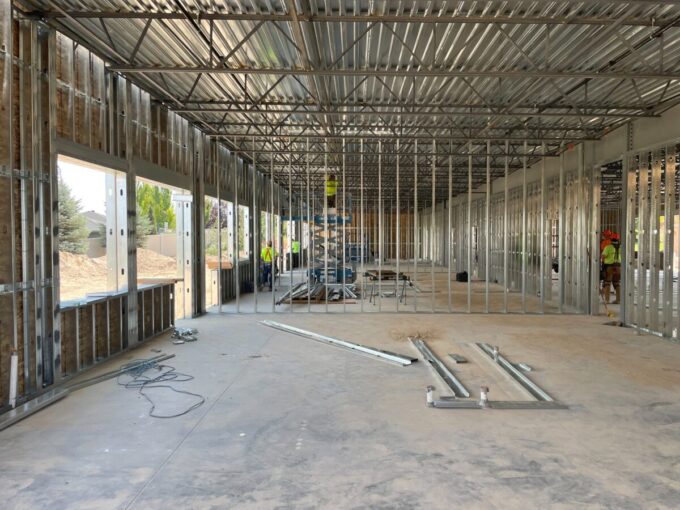
Advantages:
- Strength and Durability: Steel provides superior strength and is highly durable. It is resistant to rot, mold, termites, and other pests, ensuring a longer lifespan.
- Fire Resistance: Steel is non-combustible, enhancing the fire safety of the building.
- Dimensional Stability: Steel does not warp, shrink, or swell with changes in moisture or temperature, maintaining its shape and structural integrity over time.
- Lightweight and High Strength-to-Weight Ratio: Despite its strength, cold formed steel is relatively lightweight, which can ease the construction process and reduce foundation load.
- Unique forms and shapes easier to accomplish as cold formed steel can use curved tracks and alternative shapes are easier to form in place.
- Ease of use in infill/tenant finish situations. In situations where work space is at a premium, building the steel framed wall in place is much easier than assembling a wood framed wall on the ground and standing it up.
Disadvantages:
- Thermal Conductivity: Steel’s high thermal conductivity can lead to thermal bridging and reduce energy efficiency. Extra insulation is often needed.
- Corrosion: Although galvanized steel is resistant to rust, it can still corrode over time, especially in coastal or high-humidity environments.
- Cost: The initial cost of steel is typically higher than wood. Additionally, working with steel requires specialized tools and skills, potentially increasing labor costs. However, for crews trained in CFS, the labor can be comparable or even less than wood and can vary widely from region to region.
- Availability and Supply Chain Issues: Steel availability can be affected by market fluctuations and supply chain disruptions, potentially causing delays and increased costs.
Conclusion
In the debate of wood vs steel framing for residential buildings, the choice depends on factors like budget, design requirements, environmental conditions, and long-term maintenance. Wood framing is popular for its cost-effectiveness and ease of construction, especially in areas with lower moisture and pest risks. Cold formed steel framing offers superior durability, fire resistance, and dimensional stability, ideal for high-performance buildings and critical environments.
Architects and engineers must weigh these advantages and disadvantages for specific projects to determine the best framing material. Our team at EVstudio has deep experience with both wood and steel framing and can help you evaluate the best option for your next project.

